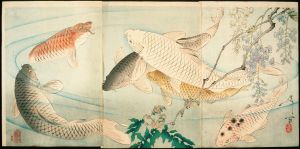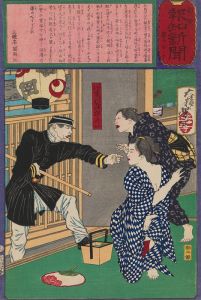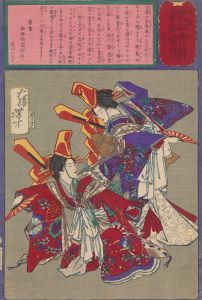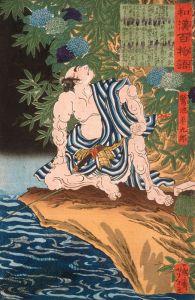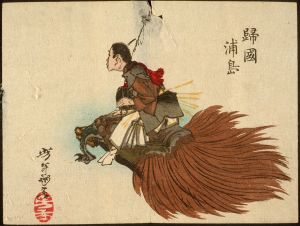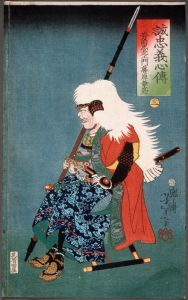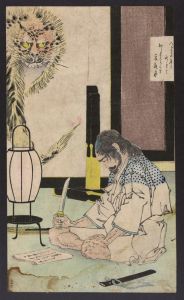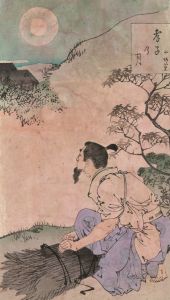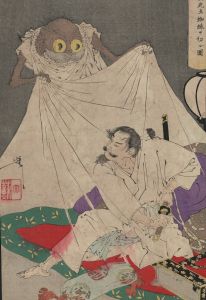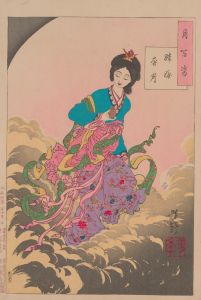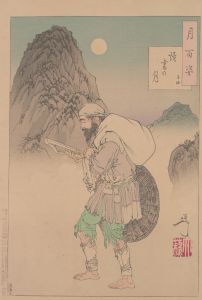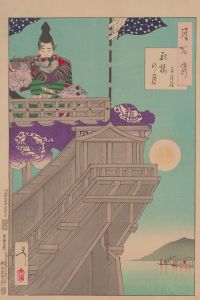
Saitō Oniwakamaru on a Carp
A hand-painted replica of Tsukioka Yoshitoshi’s masterpiece Saitō Oniwakamaru on a Carp, meticulously crafted by professional artists to capture the true essence of the original. Each piece is created with museum-quality canvas and rare mineral pigments, carefully painted by experienced artists with delicate brushstrokes and rich, layered colors to perfectly recreate the texture of the original artwork. Unlike machine-printed reproductions, this hand-painted version brings the painting to life, infused with the artist’s emotions and skill in every stroke. Whether for personal collection or home decoration, it instantly elevates the artistic atmosphere of any space.
Saitō Oniwakamaru on a Carp by Tsukioka Yoshitoshi
Saitō Oniwakamaru on a Carp is a woodblock print created by the renowned Japanese artist Tsukioka Yoshitoshi (1839–1892). Yoshitoshi is widely regarded as one of the last great masters of the ukiyo-e tradition, a genre of Japanese art that flourished during the Edo period (1603–1868) and continued into the early Meiji period (1868–1912). This print is part of Yoshitoshi's extensive body of work, which is celebrated for its dynamic compositions, vivid storytelling, and innovative use of color and line.
The artwork depicts the legendary figure Saitō Oniwakamaru, who is better known as the young Benkei, a famous warrior monk from Japanese folklore. In this scene, Oniwakamaru is shown riding a giant carp, a motif that is often associated with strength, perseverance, and overcoming adversity in Japanese culture. The image is believed to illustrate a popular tale in which Oniwakamaru, as a boy, rescues his mother from captivity by riding a carp through turbulent waters. This story highlights themes of filial piety and courage, which were highly valued in Japanese society.
Yoshitoshi's portrayal of Oniwakamaru is notable for its dramatic energy and attention to detail. The composition captures the movement of the carp as it surges through the water, with waves and spray rendered in intricate patterns. Oniwakamaru is depicted with a determined expression, emphasizing his bravery and resolve. The use of bold colors and dynamic lines enhances the sense of action and vitality in the scene, characteristics that are hallmarks of Yoshitoshi's style.
This print is an example of Yoshitoshi's ability to blend traditional ukiyo-e techniques with a more modern sensibility, reflecting the transitional period in which he worked. During the Meiji era, Japan was undergoing rapid modernization and cultural change, and Yoshitoshi's art often bridged the gap between the old and the new. His works frequently drew on historical and mythological subjects, reinterpreting them in ways that resonated with contemporary audiences.
Saitō Oniwakamaru on a Carp is part of Yoshitoshi's larger oeuvre, which includes series such as One Hundred Aspects of the Moon and New Forms of Thirty-Six Ghosts. These series often explored themes of heroism, folklore, and the supernatural, showcasing Yoshitoshi's mastery of narrative art. Today, his prints are highly regarded for their artistic and historical significance and are held in collections around the world.
This specific print exemplifies Yoshitoshi's skill in storytelling through visual art and his ability to evoke emotion and drama. It remains a testament to his enduring legacy as one of Japan's most influential ukiyo-e artists.





